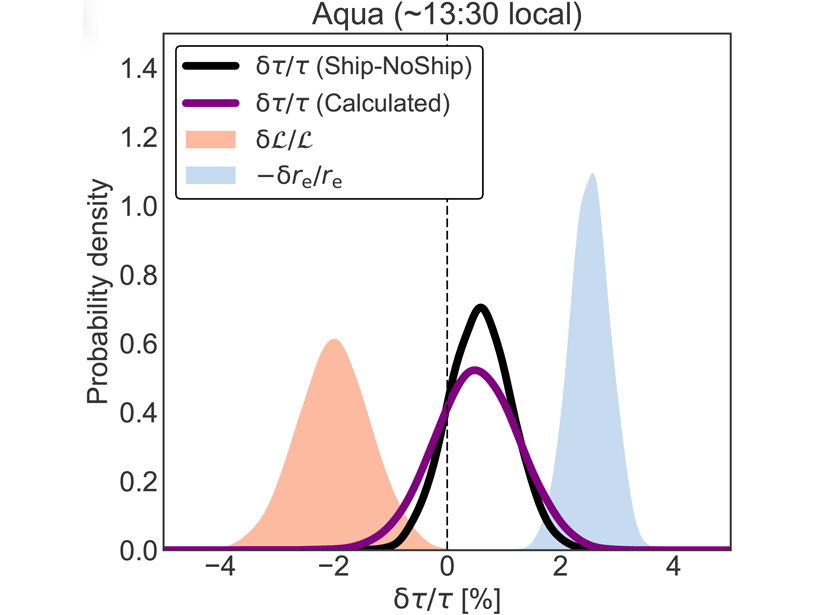Source: AGU Advances
An influence of ships on cloud reflectivity has been evident since the dawn of satellites. Despite this, past work has not been able to robustly identify a cloud perturbation associated with large and concentrated sulfate emissions in the major shipping lanes. Diamond et al. [2020] take advantage of a chance alignment of winds and shipping lanes in the Southeast Atlantic to reconstruct counterfactual, ship-uninfluenced, cloud fields. So doing identifies a substantial aerosol influence on the clouds, and helps quantify the aerosol radiative forcing globally.
The findings make the case for a substantial aerosol radiative forcing from aerosol cloud interactions globally, but also support a growing body of literature that contraindicates a strong effect from aerosol emissions on the amount of cloud condensate. Cloud brightening from aerosol emissions is real and substantial, but not so large as some claim, and, if anything, the cloud amount changes moderates rather than enhances the effect.
Citation: Diamond, M., Director, H., Eastman, R., Possner, A., & Wood, R. [2020]. Substantial Cloud Brightening from Shipping in Subtropical Low Clouds. AGU Advances, 1, e2019AV000111. https://doi.org/10.1029/2019AV000111
—Bjorn Stevens, Editor, AGU Advances
Text © 2020. The authors. CC BY-NC-ND 3.0
Except where otherwise noted, images are subject to copyright. Any reuse without express permission from the copyright owner is prohibited.

